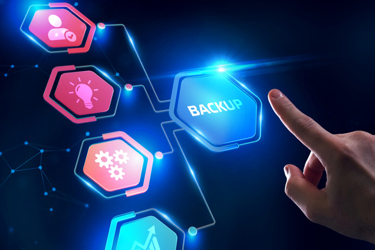The Importance Of Backup & Disaster Recovery For Remote Workers
By Joanna Sobran, MXOtech

As a business owner, it’s important to protect your corporate data from potential cybersecurity attacks. This is especially critical now that many employees are working from home due to the pandemic.
While teleworking offers many benefits such as flexibility, it also comes with increased risk for cybersecurity issues. In fact, 50% of employees confess that they do not password-protect their networks, and 90% of workers use company-owned devices for personal activity. With remote work becoming a new standard, it’s a good time to implement a modern backup and disaster recovery plan for your organization.
Revise Your Current Recovery Plan
Start by revising your existing disaster recovery plan to account for the work-from-home era. Test your current plan to find new pain points. This should allow you to create a roadmap for how to move forward.
Use Robust Passwords
Weak passwords — aside from phishing and malware — are a common way that your data can be compromised. They provide cybercriminals an easy route into your systems and accounts, putting your company at risk of being breached. For this reason, remote employees need to use strong passwords that are complex and unique.
You also may want to consider implementing multifactor authentication. This method confirms a person’s identity, usually by requiring a user’s ID and password, as well as additional verification such as a PIN or fingerprint.
Set Up Secondary Internet Connectivity
Remote workers typically rely on their high-speed internet connections to get work done. However, what if that primary internet connection fails? This temporary disruption can impact performance and productivity. That’s why it’s a good idea to have your remote staff use their smartphones as hot spots for emergency connectivity.
Backup All Of Your Data
It’s critical to back up your data on the cloud and your company’s servers, especially in the case of a power outage or security breach. Your backup and disaster recovery solution should execute frequent backups every few minutes. That way, remote employees can quickly recover critical data.
Prioritize Employee Training
One of the most common risks to IT infrastructure and your network is human error. For this reason, it’s essential to empower employees with the right knowledge and tools to prevent a potential cyberattack. Consider offering refresher courses to staff, which can cover subjects such as suspicious email avoidance, secure router use, and more.
Ask Workers To Prepare A “Bug-Out Bag”
In case of an emergency, a remote worker may need to quickly evacuate his or her home. Preparing a bug-out bag in advance can help an employee save time and prevent data loss. Ask workers to create one with their work laptop, HDMI cable, USB port, extra power supplies, and other important accessories.
The pandemic has taught us to prepare for the unexpected, and for businesses, this means having the right infrastructure in place to make sure that corporate data is properly protected. To learn more about the importance of having a backup and disaster recovery plan, take a look at the accompanying resource.

About The Author
Joanna Sobran is President and CEO of MXOtech. Sobran has unique and vast experience in the IT industry. For more than a decade, she has focused on delivering a high-level customer experience with innovation. She has created a niche for MXOtech by approaching each client’s business individually, with creative technology solutions crafted specifically to address its issues. Whether it’s through using better technology solutions, improving operations, or education, Sobran treasures her clients and truly cares about their success.
